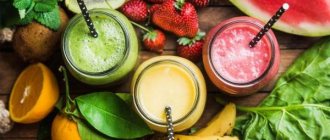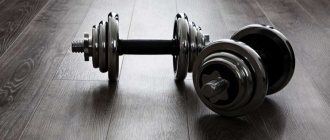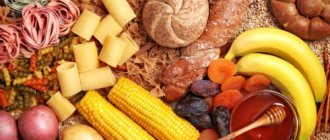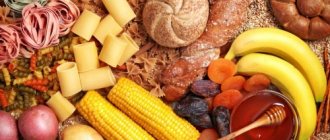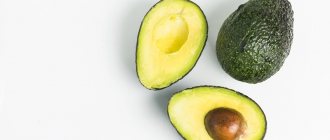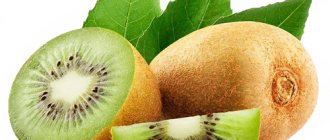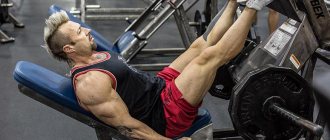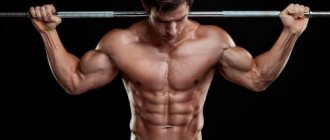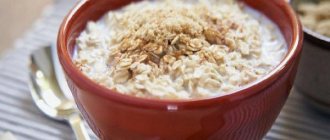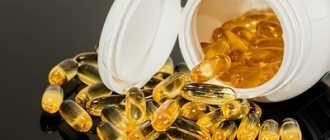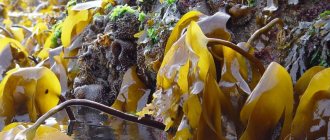Protein shakes at home for gaining weight and losing weight
What is the difference between protein shakes that are designed for weight gain and those designed for weight loss? For some reason there is no clear answer anywhere.
- Calorie content.
- Carbohydrate content.
- Taste.
Two points that play a DECISIVE role! If we can add 200-300 ml of milk (100-160 kcal + 10-15 g of carbohydrates), a banana (100 kcal + 23-25 g of carbohydrates) and 100 g of ice cream (240 kcal) into a protein shake to gain muscle mass + 25 g of carbohydrates), then when it comes to losing weight and, for example, the KETO diet, which has NO carbohydrates AT ALL, we are unlikely to be able to do this.
Therefore, the CALORIES and CARBOHYDRATE CONTENT will be very different between those who drink a protein shake to gain some weight and those who are desperately trying to lose weight! Naturally, if both groups of these people are committed to results, and not just flattering themselves with hopes that after drinking some kind of protein shake, as if by magic, they will begin to lose weight. This is the first one.
Well, the second thing is that the TASTE of these cocktails will be completely different. Imagine if there are two cocktails in front of you:
- 200 ml milk, 100 g cottage cheese, 100 g strawberries, 1 banana, spoon of honey, coconut, cocoa, 4-5 mint leaves.
- 200 ml water, 2 tbsp. spoons of powdered milk, 5-7 egg whites (or dried egg whites from egg whites), ice cubes from black coffee (or caffeine tablets), 4-5 mint leaves, 100 g strawberries.
Which one will you choose, if you ignore the issues of gaining weight and losing weight? If you don't lie to yourself, then most likely the first! Because it will be MUCH TASTIER (since there are more carbohydrates and sugar).
Our body really loves carbohydrates that are quickly absorbed (“fast” carbohydrates), because this is the EASIEST WAY TO GET ENERGY!!!
I took fast carbohydrates, and after 10-20 minutes they were in the system.
Honestly, I am not a supporter of any large variety of products when I am in the “cutting” (weight loss) phase for one simple reason - ADMINISTRATION OF INCOME NUTRIENTS!
When you begin to deviate from your diet plan during the “cutting” towards a wide variety of foods, then with a high degree of probability you will “fly out” of your calorie corridor (the number of calories that you need for daily life, which you gradually reduce to the body was in an ENERGY DEFICIT and used fats as a source of energy).
When there is a phase of gaining muscle mass, then, by and large, you don’t care. I drank high-calorie protein sweet shakes for a couple of days, gained a little fat, reduced the calorie content a little, and the excess fat went away. Plus or minus 2-3 kg. No problem.
It’s a different matter when you reduce the amount of fat in your body and you need to carefully monitor your caloric intake, and also try to maintain your training volume so that the body does not begin to actively use muscle proteins as energy (muscle catabolism - “destruction”).
A high-calorie, sweet protein shake will easily raise insulin levels in the body and stop fat burning. No options.
Drank a sweet protein shake while losing weight = stopped losing weight (at least for 1-2 days).
This is why I believe that protein shakes prepared at home, in their classical sense, are NOT NEEDED!
It is better to strictly adhere to your nutrition plan, train wisely and get results as quickly as possible.
In the phase of gaining muscle mass, at your discretion.
But for those who are currently losing weight or are simply trying to maintain their weight, I will, of course, also give a couple of recipes that, in my opinion, should not harm fat burning or, at least, not greatly “roll back” your progress.
As they say, we will choose the lesser of two evils.
People who want to lose weight understand the following simple points:
- THERE ARE diets that allow you to periodically consume carbohydrate protein shakes in your diet (for example, the BUTCH diet).
- There are NO protein shakes that will magically make you lose weight! Replenish the amount of protein and other nutrients and microelements in the body - YES! Lose weight without effort - NO!
This information is VERY UNFAVORABLE to sports nutrition manufacturers and fitness bars in fitness centers who sell their useless incredibly working “oxygen cocktails” for weight loss, high-calorie “light” milkshakes with chocolate and ice cream, for obvious reasons, but I am sure that you people who understand this, and don’t fall for such marketing “canards”.
Let's start with how to prepare a protein shake at home for muscle growth, i.e. for gaining weight, because there are a huge variety of different options, and then we’ll talk about protein shakes for weight loss.
DIY gainer
In sports nutrition, there are a great many options for special cocktails or even dishes, all of them are needed in order to increase the effect of physical training.
Proteins and carbohydrates mixed into one are called gainer. Gainer replaces 1 meal.
Gainer cocktail at home: recipe No. 1
- 100 grams of buckwheat
, - 100 grams of low-fat cottage cheese
, - 2 glasses of low-fat milk
, - nuts
,
fruits
.
Boil the buckwheat, and then mix everything together and grind it into one mass.
Gainer cocktail at home: recipe No. 2
- 3 glasses of low-fat milk
, - 2 banana
, - 2 tablespoons of nuts
, - 200 grams of low-fat cottage cheese
, - 2 tablespoons jam
, - fruits
.
Homemade protein shakes for gaining muscle mass
To prepare homemade protein shakes for gaining muscle mass or for losing weight, we first need the following things:
- Blender (alternative: shaker, whisk).
- Container (to stir all the products there; blenders often come with a special glass).
This is necessary for preparing almost all protein shakes (both for weight gain and weight loss). True, it’s still better to use a blender rather than a whisk, because it’s hard for me to imagine how you’ll stir the second banana.
Homemade protein shakes for muscle gain may contain the following products:
- Milk (any fat content);
- Cottage cheese (any fat content);
- Chicken or quail eggs (whole);
- Any protein (complex, casein (long) or whey);
- Boiled buckwheat (slowly digestible carbohydrate with a low glycemic index; for cocktails with lower calorie content);
- Cocoa;
- Coffee;
- Boiled oatmeal (glycemic index is higher than buckwheat, but is preferable to sugar or honey to increase caloric content due to carbohydrates);
- Banana;
- Yogurt;
- Chocolate;
- Strawberry;
- Kiwi (however, in combination with milk it can give bitterness);
- Nuts, including coconut flakes (coconut, by the way, is the largest nut in the world);
- Honey (preferably liquid);
- Sugar (add as a last resort, because it has a high glycemic index and there is a high probability of gaining excess fat);
- And others.
You can combine them in almost any form, but there are recommendations that, in my opinion, are worth considering:
- One serving of the cocktail SHOULD NOT HAVE more than 20-30 g of protein (there are experiments that say that 20 g of protein works the same as 30 g, although, if there is a need, the muscles can absorb 50 g, but, I think , that this is when training on steroids, and not when training naturally).
- Stick to a moderate caloric content of one shake: 200-500 kcal (I don’t see any point anymore, because the body is unlikely to absorb that amount of nutrients at once, you’ll just end up in the toilet; it’s better to divide the protein shake into 2-3 parts and drink a little at a time - BETTER LESS BUT MORE OFTEN than everything in one fell swoop).
- Fewer fast carbohydrates (if it is possible not to use sugar, honey, fruit, then do it; I understand that this is difficult, but it is better to eat less foods with a high glycemic index, because, most likely, you will gain excess fat, and we don’t want this No need).
Homemade protein shake with banana
This Homemade Banana Protein Shake is perhaps the most classic shake in today's selection because banana goes great with almost any smoothie.
That is why I decided to highlight for you several interesting recipes with banana separately.
Since almost all of our banana cocktails are weight gain cocktails, we have almost no restrictions (except for the recommendations that I indicated above).
Classic Protein Shake with Banana:
- Milk (600 ml);
- Cottage cheese (1 pack, 200 g);
- Banana (1-2 pcs);
- Honey (1-2 teaspoons);
- Nuts (50-100 g);
Beat the whole thing with a blender and divide into 2-3 doses.
Here's what you get in terms of BZHU and kilocalories:
- Calories: 1000-1100.
- Proteins: 70.
- Fats: 45-50.
- Carbohydrates: 100.
As you can see, the cocktail is very high in calories (about half the daily diet of a healthy man and almost the entire daily diet of an average girl). I think it’s clear that drinking such cocktails often will be a little harmful (especially for natural athletes, since most likely you will store quite a lot of fat over time).
There is still one problem - A LARGE AMOUNT OF MILK! Many people, after 18-20 years of age, begin to experience lactose indigestion, accompanied by flatulence, diarrhea, etc. This is a completely normal phenomenon. It so happened evolutionarily that we needed milk only in childhood, therefore, over time, the need for its digestion disappeared.
If you have problems digesting milk, then this cocktail will be too heavy for you.
For example, I can normally only absorb 150-200 ml of milk per day, then problems begin.
There is a way out of this situation. I discovered it for myself when I was receiving my first higher education.
Instead of 600 ml of milk, I poured 300-400 ml of kefir and diluted the whole thing with water so that it was not so thick. It turns out that the taste is commensurate with milk, only a little less sweet and is much easier to digest (since kefir is essentially a dairy product already digested by bacteria).
Protein shake with banana (kefir instead of milk):
- Kefir (300-400 ml);
- Drinking water (100-200 ml)
- Cottage cheese (1 pack, 200 g);
- Banana (1-2 pcs);
- Honey (1-2 teaspoons);
- Nuts (50-100 g);
Here's what you get in terms of BZHU and kilocalories:
- Calories: 900-1000.
- Proteins: 60-70.
- Fat: 40-45.
- Carbohydrates: 80-90.
The cocktail turned out to be a little less caloric, but I still advise you to divide it into at least 2-3 doses. Remember about protein digestibility.
You can slightly increase the protein component and add egg whites (although I don’t worry about this and eat whole eggs).
Here's what comes of it.
Protein shake with banana:
- Milk (350 ml)
- Cottage cheese (half a pack, 100 g);
- Chicken eggs (4 pcs.)
- Banana (1-2 pcs);
- Cold pressed olive oil (1 tablespoon);
- Honey (1-2 teaspoons);
Here's what you get in terms of BZHU and kilocalories:
- Calories: 1200-1300.
- Proteins: 90-100.
- Fat: 60.
- Carbohydrates: 83.
It turns out very tasty, but its calorie content is slightly higher.
WASH CHICKEN EGGS before adding them to a cocktail if you add them raw (salmonella “live” on the shell).
To slightly reduce the amount of fat in the cocktail, you can pre-boil the eggs, remove the yolk and add the white to the cocktail (then beat everything with a blender).
Our next cocktail will be orange-chocolate-banana.
Cocktail: “Orange-banana mood”
- Orange juice (200 ml)
- Low-fat cottage cheese (50 g)
- Banana (one piece)
- Chocolate or cocoa – 25 grams;
- Honey (1-2 teaspoons)
Here's what you get in terms of BZHU and kilocalories:
- Calories: 350-400.
- Proteins: 20.
- Fats: 5.
- Carbohydrates: 65.
This is one serving. The combination of orange juice and cocoa is surprisingly delicious!
You can combine almost any of the ingredients that I indicated at the beginning. Lots of variations!
I also like this option.
Protein shake with banana and strawberries:
- Kefir (300 ml);
- Milk (100 ml)
- Cottage cheese (100 g);
- Banana (1-2 pcs);
- Honey (1-2 teaspoons);
- Nuts (50-100 g);
- Strawberry (100 g)
It turns out very tasty! If it is a little thick, you can add a little more milk or water.
You can also crush 4-5 mint leaves in a mortar and mix them with the cocktail in a blender. It turns out to be a specific, mint-strawberry, very pleasant taste.
Experiment, friends! I would also add coconut flakes here. The shredded coconut will of course also add a little flavor. You can put 10-30 g, if desired.
Here's what you get in terms of BZHU and kilocalories:
- Calories: 800-900.
- Proteins: 40-45.
- Fat: 40-45.
- Carbohydrates: 60-70.
Student cocktail:
- Water (300 ml);
- Powdered milk (5 tablespoons)
- Chicken eggs, whole (3 pcs.);
- Oatmeal (2-3 spoons);
- Banana (1-2 pieces);
- Honey (1-2 teaspoons);
Now student memories come flooding back, when there was no money at all, and we tried to cook at least something protein after training. Then this cocktail was a great help))
By BJU and kilocalories it turns out:
- Calories: 1080
- Proteins: 70
- Fat: 30
- Carbohydrates: 130
I think that's enough banana smoothies. As I said, banana goes with almost any cocktail, so feel free to experiment.
You are unlikely to ruin your protein shake with a banana.
Let's look at other shakes for gaining muscle mass.
Making a protein shake at home to gain weight
The following smoothies can be made with or without banana, up to your preference.
Let's look at some interesting protein shake recipes that I'm sure you'll like.
Chocolate cocktail with strawberries:
- Milk (300 ml);
- Yogurt (either unflavored or any: with strawberries, strawberries, wild berries, etc.);
- Low-fat cottage cheese (50 g);
- Strawberry (100 g);
- Chocolate or cocoa – 25 grams;
- Honey (OPTIONAL, you can over-sweet it; 1-2 teaspoons);
Coconut flakes, by the way, will also taste very good here.
Here's what you get in terms of BZHU and kilocalories:
- Calories: 440
- Proteins: 30
- Fat: 15
- Carbohydrates: 50
Coffee-chocolate cocktail:
- Kefir (250 ml);
- Water (100 ml);
- Chicken eggs, whole (3 pcs.);
- Oatmeal (2-3 spoons);
- Almonds (50 g);
- Cinnamon (2-3 pinches);
- Coffee ice cubes (3-5 pcs.);
- Honey (1-2 teaspoons);
The cocktail has a pleasant coffee flavor with notes of almond.
Coffee ice cubes are prepared in advance, it turns out VERY TASTY! To prepare them, you need to brew coffee in a Turkish coffee pot or coffee maker (quite strong), pour it all into silicone ice molds (sold at any hardware store) and put it in the freezer (the coffee must cool first). These ice cubes are then added to the cocktail.
By BJU and kilocalories it turns out:
- Calories: 970
- Proteins: 53
- Fat: 56
- Carbohydrates: 68
Mint-cherry cocktail:
- Cherry juice (200 ml);
- Cottage cheese (100 g);
- Egg white (1 pc.);
- Kiwi (1 piece);
- Honey (1-2 teaspoons);
- Mint (4-5 leaves, finely ground in a mortar in advance);
A very specific cocktail. Too sweet for me. I don’t really like cloying sweetness, so I diluted it in 100 ml of water.
But kiwi with mint gives some kind of amazingly pleasant “minty sourness”, I don’t know what to call it, but it tastes very cool.
This cocktail is different in that it doesn’t have much protein, but as an alternative for occasional use, it’s not bad at all.
Here's what you get in terms of BZHU and kilocalories:
- Calories: 340
- Proteins: 25
- Fats: 3
- Carbohydrates: 50
Cocktail: “Protein Monster”:
- Powdered milk (5-6 tablespoons);
- Water (400 ml);
- Natural yoghurt – 300 ml (or strawberry, berry or other flavored; I advise you to pay attention to Valio yoghurts);
- Egg whites (6 pcs.);
- Boiled buckwheat (50 g; weigh DRY);
- Cold pressed olive oil (1 tablespoon);
- Honey (1-2 teaspoons);
The cocktail, as we see, contains an increased amount of protein, a decent amount of carbohydrates (complex from buckwheat, simple from milk and honey) and even contains healthy unsaturated fats (from olive oil).
By BZHU and kilocalories:
- Calories: 850
- Proteins: 75
- Fat: 10
- Carbohydrates: 125
There are a LOT of variations!!! These are just some of the cocktails that can be prepared from these products to gain muscle mass.
The gist is this:
- We do not mix acidic foods with milk (for example, kiwi with milk), because There is a high chance that the milk will curdle.
- The calorie content is quite high, so distribute your cocktails into several doses (so that you get 20-30 g of protein per serving).
- We give preference to ANIMAL PROTEIN (cottage cheese, milk, kefir, eggs). It has a much higher value than plant-based, which has an incomplete amino acid composition.
- I don’t see much point in using such cocktails on an ongoing basis (they’re not cheap, and they’re high in calories, but as a treat, why not).
Now let's look at various protein shakes at home for weight loss.
Protein Oatmeal Recipe. Calorie, chemical composition and nutritional value.
Nutritional value and chemical composition of Oatmeal with Protein.
The table shows the nutritional content (calories, proteins, fats, carbohydrates, vitamins and minerals) per 100 grams of edible portion.
| Nutrient | Quantity | Norm** | % of the norm in 100 g | % of the norm in 100 kcal | 100% normal |
| Calorie content | 135.5 kcal | 1684 kcal | 8% | 5.9% | 1243 g |
| Squirrels | 13.9 g | 76 g | 18.3% | 13.5% | 547 g |
| Fats | 3.1 g | 56 g | 5.5% | 4.1% | 1806 |
| Carbohydrates | 13.3 g | 219 g | 6.1% | 4.5% | 1647 g |
| Organic acids | 0.1 g | ~ | |||
| Alimentary fiber | 1.1 g | 20 g | 5.5% | 4.1% | 1818 |
| Water | 67.5 g | 2273 g | 3% | 2.2% | 3367 g |
| Ash | 0.513 g | ~ | |||
| Vitamins | |||||
| Vitamin A, RE | 7.3 mcg | 900 mcg | 0.8% | 0.6% | 12329 g |
| Retinol | 0.007 mg | ~ | |||
| Vitamin B1, thiamine | 0.015 mg | 1.5 mg | 1% | 0.7% | 10000 g |
| Vitamin B2, riboflavin | 0.095 mg | 1.8 mg | 5.3% | 3.9% | 1895 |
| Vitamin B4, choline | 11.59 mg | 500 mg | 2.3% | 1.7% | 4314 g |
| Vitamin B5, pantothenic | 0.147 mg | 5 mg | 2.9% | 2.1% | 3401 g |
| Vitamin B6, pyridoxine | 0.018 mg | 2 mg | 0.9% | 0.7% | 11111 g |
| Vitamin B9, folates | 2.2 mcg | 400 mcg | 0.6% | 0.4% | 18182 g |
| Vitamin B12, cobalamin | 0.147 mcg | 3 mcg | 4.9% | 3.6% | 2041 |
| Vitamin C, ascorbic acid | 0.44 mg | 90 mg | 0.5% | 0.4% | 20455 g |
| Vitamin D, calciferol | 0.022 mcg | 10 mcg | 0.2% | 0.1% | 45455 g |
| Vitamin H, biotin | 2.347 mcg | 50 mcg | 4.7% | 3.5% | 2130 g |
| Vitamin K, phylloquinone | 0.1 mcg | 120 mcg | 0.1% | 0.1% | 120000 g |
| Vitamin RR, NE | 0.5868 mg | 20 mg | 2.9% | 2.1% | 3408 g |
| Niacin | 0.073 mg | ~ | |||
| Macronutrients | |||||
| Potassium, K | 107.09 mg | 2500 mg | 4.3% | 3.2% | 2334 g |
| Calcium, Ca | 88.02 mg | 1000 mg | 8.8% | 6.5% | 1136 g |
| Magnesium, Mg | 10.27 mg | 400 mg | 2.6% | 1.9% | 3895 g |
| Sodium, Na | 36.67 mg | 1300 mg | 2.8% | 2.1% | 3545 g |
| Sera, S | 21.27 mg | 1000 mg | 2.1% | 1.5% | 4701 g |
| Phosphorus, Ph | 66 mg | 800 mg | 8.3% | 6.1% | 1212 g |
| Chlorine, Cl | 73.35 mg | 2300 mg | 3.2% | 2.4% | 3136 g |
| Microelements | |||||
| Aluminium, Al | 36.7 mcg | ~ | |||
| Iron, Fe | 0.073 mg | 18 mg | 0.4% | 0.3% | 24658 g |
| Yod, I | 6.6 mcg | 150 mcg | 4.4% | 3.2% | 2273 g |
| Cobalt, Co | 0.66 mcg | 10 mcg | 6.6% | 4.9% | 1515 g |
| Manganese, Mn | 0.0037 mg | 2 mg | 0.2% | 0.1% | 54054 g |
| Copper, Cu | 8.8 mcg | 1000 mcg | 0.9% | 0.7% | 11364 g |
| Molybdenum, Mo | 3.667 mcg | 70 mcg | 5.2% | 3.8% | 1909 |
| Tin, Sn | 11 mcg | ~ | |||
| Selenium, Se | 0.733 mcg | 55 mcg | 1.3% | 1% | 7503 g |
| Strontium, Sr | 12.47 mcg | ~ | |||
| Fluorine, F | 14.67 mcg | 4000 mcg | 0.4% | 0.3% | 27267 g |
| Chromium, Cr | 1.47 mcg | 50 mcg | 2.9% | 2.1% | 3401 g |
| Zinc, Zn | 0.2934 mg | 12 mg | 2.4% | 1.8% | 4090 g |
| Digestible carbohydrates | |||||
| Mono- and disaccharides (sugars) | 3.5 g | max 100 g | |||
| Sterols (sterols) | |||||
| Cholesterol | 5.13 mg | max 300 mg | |||
| Saturated fatty acids | |||||
| Saturated fatty acids | 1.1 g | max 18.7 g | |||
| Monounsaturated fatty acids | 0.565 g | min 16.8 g | 3.4% | 2.5% | |
| Polyunsaturated fatty acids | 0.047 g | from 11.2 to 20.6 g | 0.4% | 0.3% |
The energy value of oatmeal with protein is 135.5 kcal.
- Serving = 409 g (554.2 kcal)
Primary Source: Created in the application by the user. Read more.
** This table shows the average levels of vitamins and minerals for an adult. If you want to know the norms taking into account your gender, age and other factors, then use the “My Healthy Diet” application.
Protein shake at home for weight loss
First, I would like to clarify a little the situation with cocktails for weight loss, whether at home or not.
As I said, there are NO protein shakes (allowed, of course) that you drink and, as if by magic, begin to lose weight.
A few rules for making protein shakes for weight loss at home:
- Calorie content should be as low as possible (less carbohydrates, more protein).
- If possible, completely eliminate the presence of fast carbohydrates (fruits, sugar, honey, etc.) in them.
- You can additionally use stimulating additives (caffeine, yohimbine hydrochloride) and others (L-carnitine, BCAA, protein, etc.)
Those. we MAXIMIZE THE PROBABILITY that the body will store energy from the protein shake into fat reserves. This is not important for a person who is gaining muscle mass, but it is very important for a person trying to lose weight.
Protein shake #1:
- Water (300 ml).
- Whey isolate (1-2 scoops of 30 g each).
The simplest protein shake for those who are losing weight (0 sugar, 24-27 g of protein per scoop, about 100 kcal per scoop). As you can see, the cocktail is very simple, but nevertheless low in calories (especially since you can choose whey isolate with some flavor).
Protein shake "Energy":
- Water 300 ml.
- BCAA (1 scoop, 15 g).
- Whey isolate (1 scoop).
- Coffee ice cubes (we talked about how to prepare them a little higher).
- Tincture of ginseng or eleutherococcus (15 drops).
I really like to prepare this cocktail dry before training in the gym (about 15 minutes before it) for several reasons:
- BCAAs are great for keeping muscles lean, and many experiments have long proven that BCAAs help make fat burning more effective.
- Whey isolate is perfectly digestible and contains an additional portion of BCAAs, of which there is never too much during drying.
- Coffee ice cubes (namely caffeine) stimulate the central nervous system. The fat-burning effect of coffee has long been proven, so it would be stupid not to use it.
- Tincture of ginseng or eleutherococcus. These drugs were called “weapons of Soviet athletes” and are sold in any pharmacy. The tinctures are alcohol based, so you don’t need to add a lot of them to the cocktail (it will be bitter), 15 drops is enough.
In terms of calories, it is also very low in calories (less than 150-200 kcal) + stimulants contribute to additional fat burning.
By the way, I wrote a detailed article about BCAA: what it is needed for. Read it, there are many interesting points there.
Protein shake “Fat Burning Machine”:
- Water 300 ml.
- BCAA (1 scoop, 15 g).
- Whey isolate (1 scoop).
- Coffee ice cubes (we talked about how to prepare them a little higher).
- Tincture of ginseng or eleutherococcus (15 drops).
- L-carnitine (15-30 ml).
Take 2-3 tablets of 5 mg of yohimbine hydrochloride with this cocktail (I gave a link to the article about it above) 30 minutes before training.
It’s like an “energy” cocktail, only L-carnitine is added here, which helps transport triglycerides into the mitochondria (energy stations) of cells during training, as well as yohimbine hydrochloride, which blocks alpha-2 adrenergic receptors and prevents you from becoming fatter.
Russian Standard Protein Shake:
- Water (300 ml).
- Powdered milk (5 tablespoons).
- Egg whites (5 pcs.).
- Banana (2 pieces).
- Honey (1 teaspoon).
This cocktail falls into the category of “I’m afraid to drink sports nutrition, it’s all harmful, I would like something made from real food.” The cocktail is slightly higher in calories than the ones above.
Bodybuilders of the 90s in our country loved this cocktail very much, because sports nutrition was practically impossible to get.
By BZHU and kilocalories:
- Calories: 500
- Proteins: 50
- Fats: 5
- Carbohydrates: 80
Again, I remind you that while cutting it is better not to abuse various cocktails at all, because this complicates monitoring progress (it is difficult to count calories).
But I wanted you to know these recipes, because... I understand perfectly well how much you sometimes want to diversify your diet.
How to make a protein shake from powder
Well, I couldn’t ignore standard protein shakes made from powder and how to prepare them, because since my student life I’ve probably tried almost all the protein brands available in Russia today.
Preparing them couldn't be easier. This is a classic of the genre, as they say.
By the way, I don’t throw away the protein cans, but take them to my parents (I just came to visit them for a couple of days). They use these jars to store spring water)))
Here is a photo (my favorite protein brands are on them, by the way):
First, briefly about the main forms of protein:
- Whey (WHEY: concentrate, isolate, hydrolysate) – rapid absorption (15-30 minutes).
- Eggs albumin: egg albumin - medium digestibility (30-60 minutes).
- Beef (Primal) – average digestibility (1-2 hours).
- Casein – slow absorption (4-6 hours).
I have an article where I talked in great detail about what whey protein is and all its forms. Read it. It is very detailed and understandable.
You can buy whey or any other protein at the CHEAPEST price available for yourself using this link.
Each of these types of protein can be mixed either with water (less calorie, but, as a rule, less tasty) or with milk (more calorie, tastier, but not suitable for everyone, because some people are lactose indigestible).
Standard protein shake in the classic sense:
- Mix 1-2 scoops (a scoop is a measuring spoon that is in every pack of protein) of protein with 200-300 ml of water or milk.
- Then you stir the whole thing in a shaker (a jar with a mesh, very convenient for sports), or in a blender, or in a mixer.
ALL! The cocktail is ready. Nothing could be simpler. Some proteins are easier to mix (whey, egg), some are a little more complicated (beef, casein), but in general, this is a protein shake made from powder.
To this whole thing you can add 1-2 bananas, strawberries, chocolate or anything else at your discretion.
I do not recommend adding anything protein to a powdered protein shake for one simple reason.
1 scoop of protein powder contains 20-27 g of protein, which is more than enough for one dose (more is unlikely to be absorbed).
- If calorie content is not particularly important to you, then you can drink complex protein, or indeed any protein.
- If you are losing weight, then whey isolate.
- At night you drink CASEIN (it takes 4-6 hours to digest, does not raise insulin levels much and supplies your muscles with amino acids almost all night).
Oatmeal in a jar with protein
Here is a recipe for those who work hard in the gym to build muscle mass or want to introduce more protein into their diet. We'll be eating this lazy oatmeal with our protein! This recipe is not much different from the previous ones. You need to prepare the following ingredients:
70 grams of oatmeal + 130 ml of low-fat milk + any berries + natural sweetener + 25 grams of vanilla protein.
Place cereal, honey, peanut butter and milk in a jar. Mix everything and leave overnight. In the morning you need to add the protein and mix. Place berries on top. Overnight oatmeal in a jar in the refrigerator is ready!
When making this lazy oatmeal, it's best to use a variety of protein flavors. Vanilla, chocolate, banana are great.
By the way, such a snack will also be an excellent energy boost before visiting the gym!
Harm and contraindications of oatmeal
The beneficial qualities of oatmeal are undeniable, but this product has contraindications.
- Allergic reaction to oats.
- Gluten intolerance (celiac disease).
- Flatulence, digestive disorders.
Patients with diabetes mellitus, kidney failure and heart failure should consume porridge with caution. This can be done after consulting with your doctor.
And one more thing: everything that is useful can be harmful if used excessively. Scientists have discovered that oats contain phytic acid, which leaches calcium from bones, which over time can lead to the development of osteoporosis. If you eat oat products too often, phytin accumulates in the body, interfering with the absorption of calcium.
Important!
Nutritionists recommend not to overuse oatmeal, eating it no more than 3 times a week, alternating with other healthy cereals - pearl barley, millet, buckwheat, rice. And, of course, don’t eat oatmeal several times a day!
